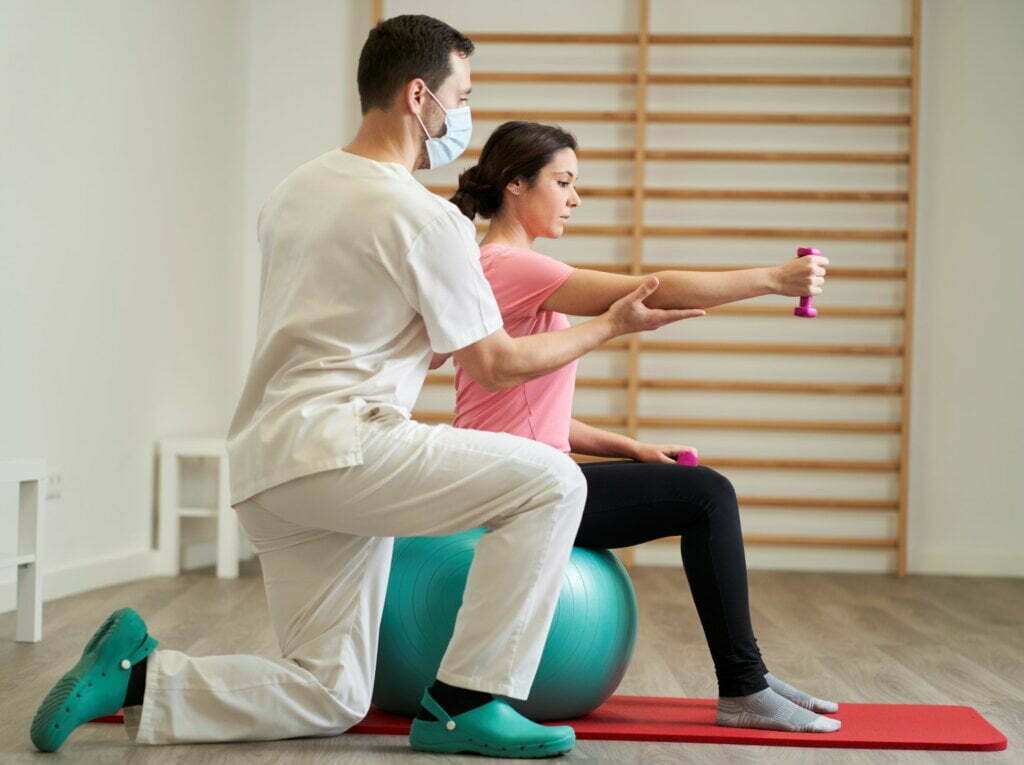With all the talk about physical therapy (PT) in the news and on social media, it’s no surprise that more and more people are looking into this form of treatment. But even if you’ve heard of PT, you may not be aware of all the conditions it can help. Here are 10 conditions that you may not have known could be improved with physical therapy:
Lymphedema
The lymphatic system collects extra fluids (lymph) and transports them through the bloodstream and body. Therapists utilize compression garments or total decongestive therapy to relieve swelling (edema), which frequently follows infection, cancer, or radiation (which creates scar tissue), and to prevent further fluid buildup.
Vertigo
People over 65 frequently complain of dizziness, lightheadedness, and general unsteadiness, which can result in harmful falls. Working on balancing exercises and vestibular rehabilitation, a therapy that teaches patients to adapt to their balance challenges by increasing vision and body sense, can help those with dizziness and balance abnormalities.
Muscular dystrophy
The neuromuscular disorder known as muscular dystrophy is made up of several hereditary illnesses. Therapists can prescribe mobility aids like braces and splints, as well as work with children and adults with exercises as basic as walking up stairs and kicking a ball or using standing frames for support to combat the progressive weakening and degenerative skeletal issues linked to the various disorders.
Osteoarthritis
In the United States, osteoarthritis, the most prevalent joint condition that results in disability, affects about 32.5 million people. Pain, stiffness, and swelling can result from inflammation and degradation of the bones within the joint, which most frequently affects the knee, hip, hands, or feet. Reduced discomfort and improved functionality can be achieved by manual therapy exercises, range-of-motion evaluations, and strengthening of the supporting muscles (such as quadriceps and hamstrings for osteoarthritis in the knee).
Tension-type headache
The physical therapist will implement a treatment plan that includes manual therapy for neck mobility, strengthening upper back muscles, and altering a workspace if the patient has tension-type headaches and the PT has found a prior head or neck injury, tested range of motion and muscle strength, and looked at posture.
Chronic Obstructive Pulmonary Disease (COPD)
While it may seem counterintuitive that physical therapists may assist with a respiratory condition like COPD that can cause muscle weakness and balance problems. Not to mention, exercise can strengthen the lungs itself. As a member of a pulmonary rehabilitation team, PTs seek to strengthen the inspiratory muscles through pursed lip and diaphragmatic breathing to lessen breathlessness and increase the effectiveness of each breath.
Burns
Physical therapy can start treatments and exercises to reduce scarring and prevent the loss of range of motion in coordination with a health care team while treating severe burns and wounds in acute care settings. Joint mobilization is aided by electrical stimulation, compression clothing, and equipment that provide constant passive motion. Splinting can also aid in removing surplus scar tissue.
Sexual dysfunction and pelvic pain
Targeted exercises and stretches can be used to treat a variety of pelvic floor dysfunction and pain conditions. Men also frequently battle with the illness, which in women frequently begins with pregnancy and childbirth. To reduce pain, PTs also help patients to improve posture, teach better kid lifting and carrying techniques, and demonstrate how to stand up from a sitting position appropriately. Other common therapeutic methods include the use of hot or cold packs, massages, adjustments, and electrical stimulation.
Diabetes
Exercise can help control blood sugar as part of an overall diabetes management regimen. Additionally, people with diabetes may experience issues with leg and foot sensation. Physical therapists can help these patients and instruct them on how to take care of their feet properly to avoid future issues.
If you have diabetes, your doctor may recommend remote patient monitoring. This is a system that allows your doctor to track your blood sugar levels and other health metrics from a remote location. This can help them to provide timely medical intervention, therapy, and treatment plans.
Multiple sclerosis (MS)
Multiple sclerosis, a severe central nervous system condition, has no known origin, is often diagnosed between the ages of 20 and 50, and affects women more than twice as frequently as it does males. Therapists assist patients with gait training, mobility, and balance, as well as assistance devices such as canes and scooters due to muscular weakness, stiffness, and numbness.
Conclusion
In conclusion, physical therapy is a great way to help improve a wide range of conditions. The most appropriate form of physical therapy will depend on the patient’s symptoms, unique medical condition, and factors like how long the patient has been experiencing pain.
If you’re experiencing any of the issues listed above, don’t hesitate to reach out to a physical therapist. They can help you get back on your feet—literally and figuratively.
Read more: 9 Benefits of Physical Therapy
References
- Physical therapy – InformedHealth.org – NCBI Bookshelf. (2020, August 27). Physical Therapy – InformedHealth.Org – NCBI Bookshelf; Accessed July 21, 2022 at www.ncbi.nlm.nih.gov. https://www.ncbi.nlm.nih.gov/books/NBK561514/









